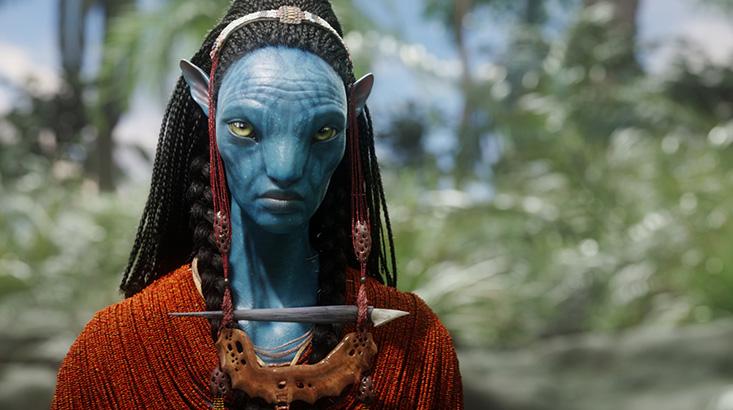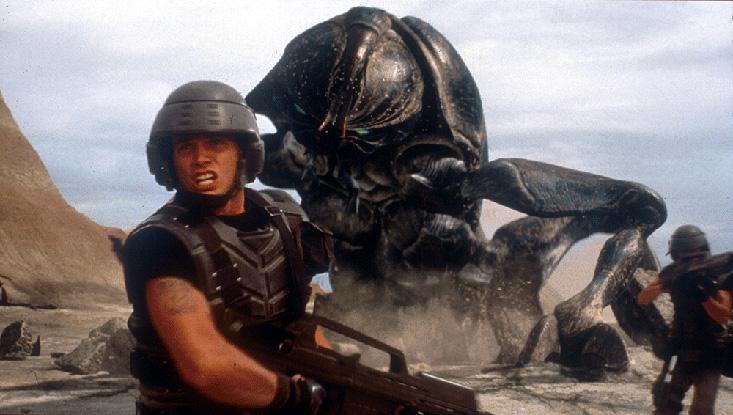You might expect scientists to heap scorn on Hollywood’s depiction of aliens, but they’re generally forgiving. Dirk Schulze-Makuch, an astrobiologist at the Technical University of Berlin, remarks that most science-fiction aliens are either riffs off the weird life we see in Earth’s deep ocean, such as the squid-like creatures of Arrival, or versions of now-extinct animals from earlier in our planet’s history, such as the adult trilobite in Prometheus. And that’s not a bad strategy.
“If you want to study a lot of different body shapes or forms, look at the Cambrian Explosion,” he says. “If you look at a museum exhibit of life from 500 million years ago, you see trilobites and other unique types of life. There’s a lot of variety.”
What irritates him and others isn’t what movie aliens look like, but the magical things they do. Leave aside their physics-defying technology and consider just their most basic attributes, such as metabolism. “Prometheus was especially terrible this way,” says Caleb Scharf, the director of astrobiology at Columbia University. “[That movie had] the idea that a little thing can grow into an enormous thing when you’re not looking, even though there’s nothing to eat. They left this thing alone, and the next thing you know it’s this enormous tentacled thing.”
Jim Cleaves, a biochemist at the Institute for Advanced Study in Princeton, New Jersey, has the same complaint about the movie Alien. “The alien always bothered me,” he says. “Somehow it manages to turn a few pounds of biomass into several hundred pounds of really hyperactive alien really quickly, without actually eating anything.”
For scientists, it’s precisely the mundane concerns that are how we will identify life. No matter what form it takes, life in the universe needs a metabolism. It has to take in energy in order to grow and maintain its daily needs. Another essential quality is that living things do not exist in isolation; they evolve in response to their environment. This context, too, tends to be overlooked. Screenwriters commonly depict aliens without an ecology that would support their existence.
“The one that always bugged me was Starship Troopers,” Cleaves says. “The giant colonies of ‘bugs’ on their planet seems the equivalent of having herds of buffalo, and nothing else, running across the Sahara Desert. What do they eat? Where is the water?”
The odds of alien life being intelligent are not that great.

Scharf says the movie Avatar is also guilty of this crime: “There’s a creature with lots of teeth. It’s cool. But whenever you invoke such a monstrous thing, you have to ask, Could this ecosystem really support that? We had dinosaurs at one point, but there were a lot of them, and an enormous food pyramid to support that. So you wouldn’t have a quiet forest except for one enormous monster. What are they eating?”
“Evolution does what it has to, and no more,” Scharf adds. “The biggest criticism in those alien depictions is they’re not thinking through how a real ecosystem works, a real biosphere. Evolution doesn’t say, ‘We need a monster here.’”
Schulze-Makuch says that Independence Day at least addresses this point. “I liked the depiction of the aliens being like locusts, where they went from one planet to the other,” he says. “I don’t think that strategy would actually work, because space is way too big and there’s not enough to feed on all the other planets.”
In both science and art, the central challenge of thinking what an alien could be is that if something is too alien from us, we probably wouldn’t recognize it. It has to be different enough from us to be truly alien, but not so beyond our experience that we wouldn’t be able to identify it as a living entity.
Scharf says the silicon-based Horta from the Star Trek original TV series episode “The Devil in the Dark” is one of the best examples of an alien that strikes this balance. The Horta are at first not even recognized as living creatures because they look like rocks. When Captain Kirk and Spock come to realize that certain rocks are sentient life forms, they are able to communicate with them.
“It was clever, because it raised the idea of something so different, and yet there is life there, an alien presence where you can almost understand what it’s up to,” Scharf says. “That was one of the most sensitive depictions of something being really alien, but not so alien that you couldn’t recognize it.”
An even stranger type of alien, says Penny Boston, director of NASA’s Astrobiology Institute, was dreamed up by SETI astronomer Frank Drake. In his essay “Life on a Neutron Star,” he imagined microscopic lifeforms in what is probably the least hospitable setting in the known universe: the surface of a neutron star, which is essentially a giant atomic nucleus, with gravity billions of times stronger than on Earth. The organisms would live at a pace a million times faster than life on Earth, since nuclear reactions happen much faster than chemical reactions. This idea was later featured in Bob Forward’s novels Dragon’s Egg and Starquake. In these novels, the advanced race of a neutron star are called “cheela” and, although they have about the same mass as a full-grown human, the extreme gravity compresses them down to the size of a sesame seed. Hollywood has yet to create a film version.

Jonathan Lunine, director of the Center for Astrophysics and Planetary Science at Cornell University, says that 2001: A Space Odyssey provided one of the best movie depictions of aliens that are fundamentally different from us. Rather than meet the aliens, we only see the artifacts, such as the imposing black monoliths, they’d left behind.
“I like to think the reason you never meet them is that of they were so different, so alien, it was meaningless to imagine any interaction with humans,” he says. “Maybe they weren’t corporeal. But always there’s some kind of a presence. Their presence was even suggested during the psychedelic scene, where you’re going through the stargate, and these geometric diamond shapes appear.”
“It was the subtlety and the uncertainty, and the difficulty of understanding that interaction, that I think, if we ever do encounter an extraterrestrial intelligence, it’s what it’s going to be like,” he adds. “As much as I love Star Trek, it’s not going to be that Captain Kirk meets a guy with a lizard head.”
Our fictional imaginings of aliens almost always presume they are intelligent. That’s a necessity for such tales, because without intelligence, it’s hard to come up with a good story; even a simple predator/prey situation requires some intelligence. For many scientists, however, the odds of alien life being intelligent are not that great.
“Much of the public equates the search for life beyond Earth with the possibility of intelligent life beyond Earth,” Boston says. “I suspect that there are many more instances of life arising on planets in the galaxy, than the rise of intelligent lifeforms.”
Schulze-Makuch is optimistic that life anywhere can become complex, given enough time, but he, too, is doubtful about the development of intelligence. “We may live in an empty universe, where the origin of life is difficult,” he says. “But if that is not the case, there will be a lot of life, and complex life, too. We don’t know about technologically advanced life—that may be very rare. As far as we know, it only happened once on Earth. We don’t have technologically advanced kangaroos or dinosaurs, for instance.”
The rarity of intelligence in the universe would be a depressing answer to why we haven’t seen aliens yet: Most aliens haven’t evolved much beyond eking out existence on their own planets. We may not be the first species in the cosmos, but we might well be the first to look up at the stars and imagine who else might be out there.
Leslie Mullen has 20 years of producing and reporting experience in science media, creating news stories, photographs, podcasts, and radio, television, and live-stage shows. She has produced and written for PBS, NBC, National Geographic Channel, space.com, and NASA’s Astrobiology Magazine.
Watch: Richard Holmes, the biographer of Shelley and Coleridge, explains the “terror of science.”
This article was originally published on Nautilus Cosmos, in November 2016.






























